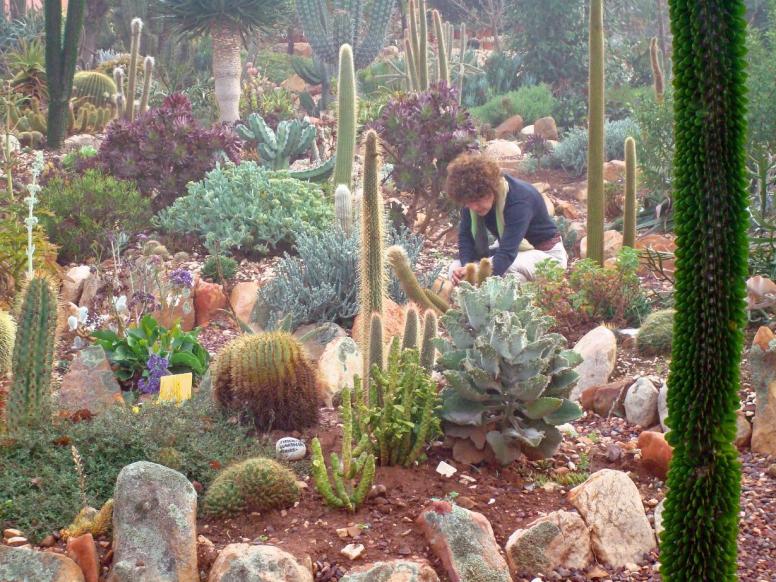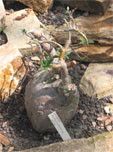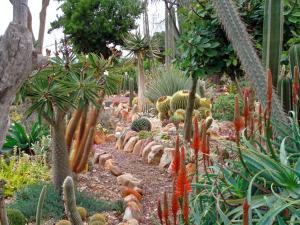During Festive Season (school holiday) 2007/2008:
At Soekershof Walkabout, Klaas Voogds West, Robertson, Western Cape, South Africa.
Daily at 11 AM and 3 PM:
Rocking the World; A succulent landscaping project in Robertson.
Designed for all (succulent) gardeners/landscapers who want to know more about the possibilities and impossibilities of waterwise gardening in South Africa with emphasis on the Western Cape. See this and that plus media release below.
R 150.00 pp including picnic and standard program with quest in maze and tour in succulent gardens (see http://soekershof.com).
Duration 3-4 hrs. Only prepaid bookings.
Number of participants per educational limited to approx. 10 PAX.
Subjects:
1) Theoretical basics of landscaping rockeries (soil, composition, creating micro climates)
2) Landscaping a rockery in practice. Interaction between participants and the garden artists of Soekershof.
Discover that waterwise gardening is more labour extensive than generally perceived but also very much rewarding.
Info and bookings: soekershof@lando.co.za Tel: 023-6264134
Rocking the world
Robertson (Western Cape); November 13 2007 – Soekershof Walkabout, Mazes & Botanical Gardens, commenced excavagation works for two rockeries which will the ‘growing ground’ of approx. 1000 succulent species from around the world within two years. These new species are in addition to the 2467 registered different succulent plants in the existing succulent gardens.
The gardens of Soekershof Walkabout distinguish themselves from those of other botanical gardens in South Africa with all plants under the open sky (not under roof or shade cloth) and all plants are organically cultivated without the use of fertilisers and other chemicals. Furthermore is Soekershof Walkabout the only botanical garden in South Africa which is certified by Fair Trade in Tourism in South Africa (http://www.fairtourismsa.org.za/).
Both rockeries are near the entrance; one will be the ‘growing ground’ of caudiciform plants (f.e. ‘bottle trees’, including several baobab species, from Australia, Madagascar and Southern Africa) and the other one will mainly consist of American succulent plants such as cacti, yuccas and agaves next to Brazilian ceiba trees (Choriosa speciosa). Most plants of the new collection are home grown from seeds and hardly or not on display elsewhere in South Africa.
The investment in the new rockeries is the first phase of a three year program during which all ‘gaps’ in the existing landscape of 10 hectares will be filled with different sphere gardens. In the beginning of next year excavagation works are scheduled for a very formal layout of sample gardens for the own nursery customers and the extension of the Langeberg Garden (in fact a maze without dead ends and home grown indigenous trees and shrubs).
Since the official opening in December 2002 Soekershof Walkabout is increasingly attracting (amateur) horticulturists, garden societies, botanists, etc. from around the globe. Locally Soekershof Walkabout is mainly known for its Klaas Voogds Maze which is regarded as the ‘largest hedge maze in the world’.
Walk
Wonder
and be
Inspired!
Soekershof Walkabout
Mazes & Botanical Gardens
Primary Unusual Destination
Certified by Fair Trade in Tourism in South Africa
Klaas Voogds West, P.O. Box 291, Robertson 6705, South Africa
Tel: +27 (0)23 626 4134
Skype: soekershof
E-mail: soekershof@lando.co.za
Website: http://www.soekershof.com
Blogsite: http://soekershofwalkabout.blogspot.com/
Soekershof Science: https://soekershof.wordpress.com
Dutch: http://www.dagboek.iblog.co.za
http://www.travelpod.com/members/soekershof
Mission statement:
Soekershof Walkabout is a sacred enterprise, based on an appreciation of nature, humor, play, creation, expression and respect for the land, and the growth and development of the people and plants that participate -employees and visitors alike.
Soekershof Walkabout is a personal event which is simply described as the “Largest Hedge-Maze in the world” and/or “a garden with more than 2400 different succulents from all over the world under the open sky”.
But Soekershof IS more than that.
The original concept goes beyond all prejudice perceptions.
Walk, Wonder and be Inspired!!!
Just let it happen and take your time; a few hours at least.
Experiencing Soekershof Walkabout is, globally, a unique and hugely entertaining exercise for Body, Mind and Spirit; not to be missed.
Daily Tours: 11 AM and 3 PM (sharp!!!)
See website for more details.

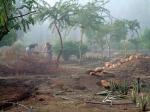



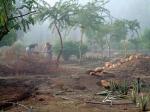 Preparation limits itself than only to weeding, cleaning and planting unless you planned to make (small) rockery heeps, etc. (see picture).
Preparation limits itself than only to weeding, cleaning and planting unless you planned to make (small) rockery heeps, etc. (see picture).